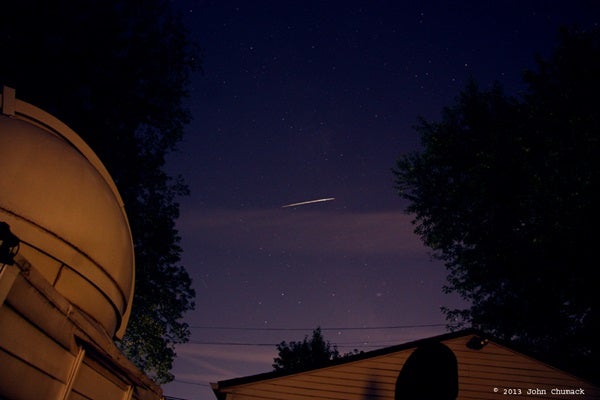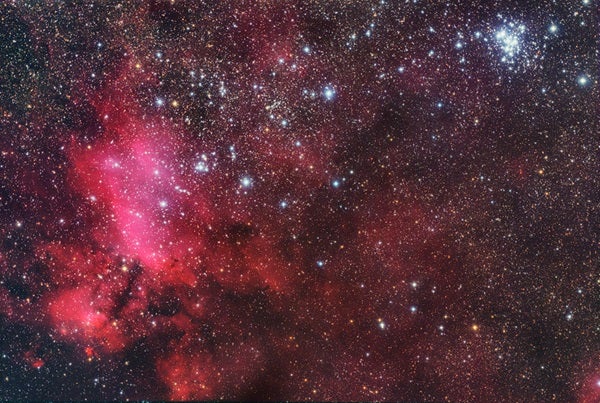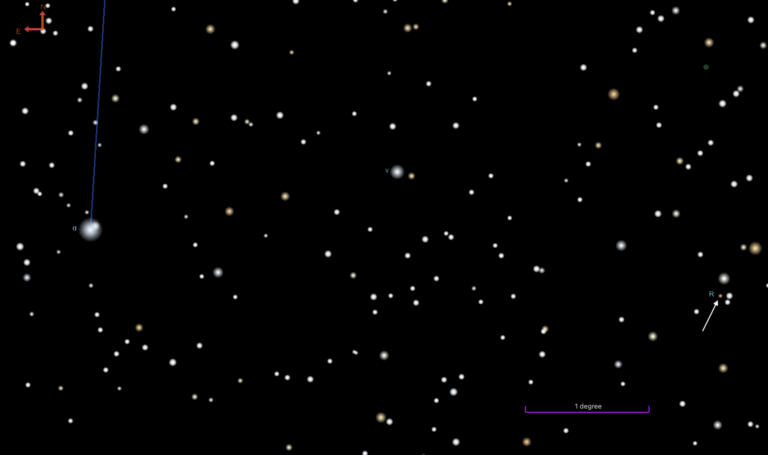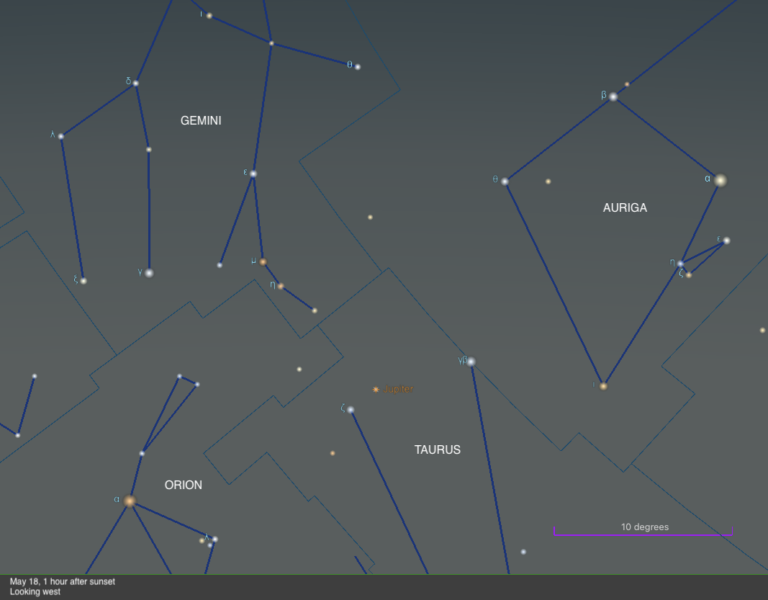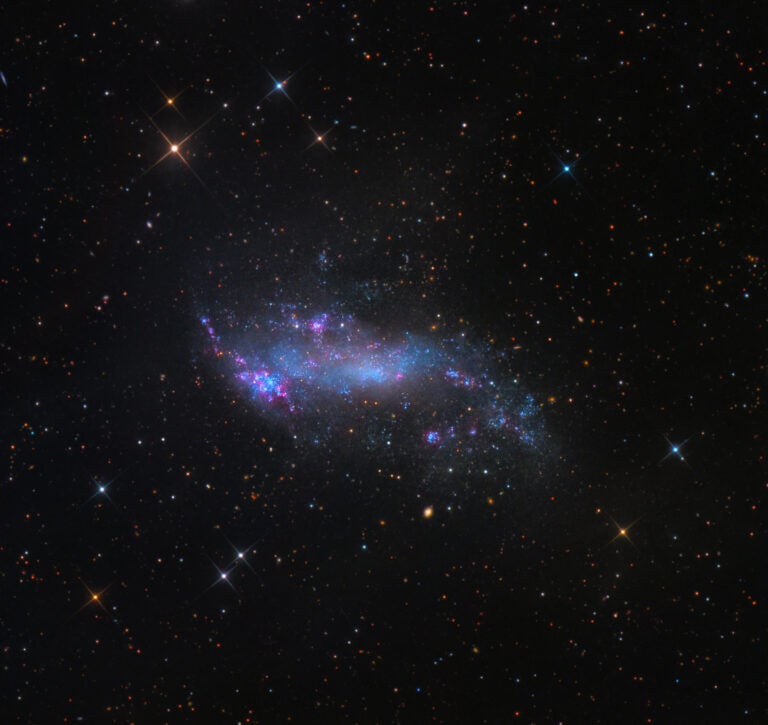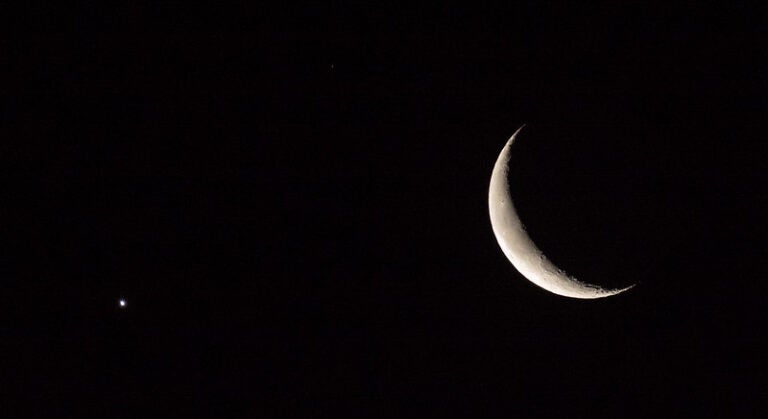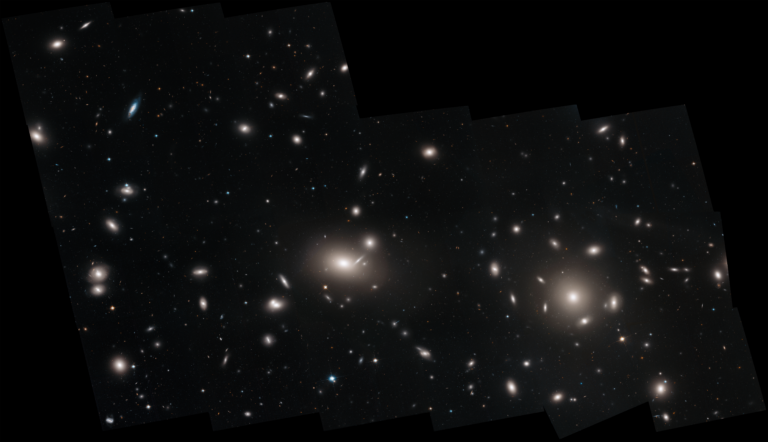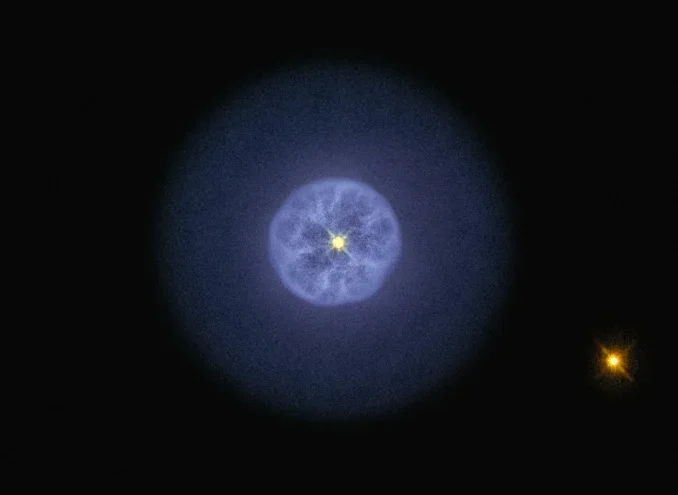Tonight offers a good opportunity for binocular users to track down the northern sky’s brightest globular cluster. M5, whose 100,000 stars glow at a combined magnitude of 5.7, lies in the southwestern corner of the constellation Serpens the Serpent and stands high in the southwestern sky after darkness falls. You can locate it just 0.4° north-northwest of the 5th-magnitude star 5 Serpentis. Binoculars show the cluster as a hazy ball of light punctuated by a bright core.
Saturday, July 27
The dwarf planet Ceres appears about 25° high in the south-southwest as darkness falls and makes a tempting target during the early evening hours. Glowing at 8th magnitude, it’s easy to find through binoculars or a telescope among the bright stars along the border between Scorpius and Libra. Tonight, Ceres lies 2.8° due west of the lovely 2nd-magnitude double star Beta (β) Scorpii. But even more impressively, it stands just 8′ northeast of the magnitude 5.0 star Lambda (λ) Librae.
Look for the waning crescent Moon this morning as it hovers just west of the Hyades star cluster in Taurus the Bull. The two objects clear the horizon by 3 a.m. local daylight time and appear some 25° high in the east as morning twilight starts to paint the sky. The Moon appears about 25 percent lit and easily outshines the stars of the V-shaped Hyades. First-magnitude Aldebaran, which marks one tip of the V, appears brighter than the rest of the cluster’s stars because it actually lies in the foreground.
Sunday, July 28
Observers of the outer solar system can get a good view of Uranus before dawn. The best time to look for it is shortly before twilight begins around 4 a.m. local daylight time. Uranus then lies 45° high in the east-southeast against the backdrop of southern Aries the Ram. This morning, use binoculars to find the magnitude 5.8 planet 2.3° south-southeast of the magnitude 5.7 star 19 Arietis. A telescope reveals Uranus’ blue-green disk, which spans 3.6″.
Monday, July 29
Although Jupiter reached opposition and peak visibility more than a month ago, it remains a stunning sight from shortly after sunset until well past midnight. It resides among the background stars of southern Ophiuchus the Serpent-bearer, a region that climbs highest in the south around 9:30 p.m. local daylight time. Shining at magnitude –2.4, Jupiter is the night sky’s most conspicuous object until the Moon rises around the start of morning twilight. When viewed through a telescope, the planet’s disk spans 43″ and shows striking cloud-top detail.
The Southern Delta Aquariid meteor shower reaches its peak this morning, but meteor rates remain essentially the same from July 27 to 31. And with New Moon arriving tomorrow, viewing conditions should be ideal. The meteors appear to radiate from the constellation Aquarius, which rises in late evening and appears highest in the hours before dawn. At its best, the shower produces up to 25 meteors per hour under a dark sky, though the highest rates occur at tropical locations and in the Southern Hemisphere.
Wednesday, July 31
The Sun’s outermost major planet, Neptune, rises around 10 p.m. local daylight time. But the best time to look for this ice giant world comes when it climbs nearly halfway to the zenith between 3 and 4 a.m. The magnitude 7.8 planet lies in Aquarius, 0.9° east-northeast of 4th-magnitude Phi (φ) Aquarii. You can confirm your sighting of Neptune through a telescope, which reveals the planet’s 2.3″-diameter disk and blue-gray color.
New Moon occurs at 11:12 p.m. EDT. At its New phase, the Moon crosses the sky with the Sun and so remains hidden in our star’s glare.
Thursday, August 1
Magnificent Saturn reached its peak less than a month ago, when it appeared opposite the Sun in the sky, and our view of the ringed planet remains spectacular. It is on display from shortly after sunset until twilight starts to paint the morning sky. It currently resides among the background stars of Sagittarius the Archer, hanging in the southeastern sky as darkness falls and climbing highest in the south around midnight local daylight time. Saturn continues to shine brightly, too, at magnitude 0.2. When viewed through a telescope, the dramatic ring system spans 41″ and tilts 25° to our line of sight, while the planet’s family of modestly bright moons appears next to the gorgeous world.
This week offers a good opportunity for binocular users to track down one of summer’s finest open star clusters. NGC 6231 lies in the tail of Scorpius the Scorpion, just 0.5° north of the double star Zeta (ζ) Scorpii (which is another fine binocular sight). NGC 6231 shines at magnitude 2.6 and packs more than 100 stars into a region just 14′ in diameter. This part of Scorpius lies nearly due south after darkness falls, though it doesn’t climb high from mid-northern latitudes.
The Moon reaches perigee, the closest point in its orbit around Earth, at 3:11 a.m. EDT. It then lies 223,320 miles (359,398 kilometers) away from us.
Saturday, August 3
Mercury climbs out of the solar glare before dawn in early August on its way to a nice peak next week. This morning, the innermost planet rises 70 minutes before the Sun and climbs 7° high in the east-northeast a half-hour before sunrise. Mercury shines at magnitude 1.3 and may be hard to see without binoculars. Once you locate it, however, you should be able to glimpse it with the naked eye. Target the inner world through a telescope this morning, and you’ll see a 9″-diameter disk that appears just 19 percent lit.
Sunday, August 4
With the dog days of summer now in full bloom, it shouldn’t come as any surprise to find the season’s namesake asterism, the Summer Triangle, on prominent display. The trio’s brightest member, Vega in the constellation Lyra the Harp, stands nearly overhead around 11 p.m. local daylight time. The asterism’s second-brightest star, Altair in Aquila the Eagle, then lies nearly two-thirds of the way from the southeastern horizon to the zenith. Deneb, the luminary of Cygnus the Swan, marks the Summer Triangle’s third corner. Although it is this asterism’s dimmest star, it’s the brightest point of light in the northeastern sky.


